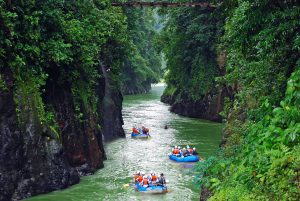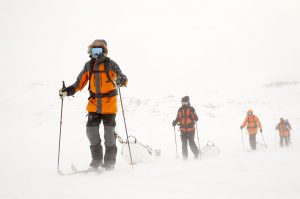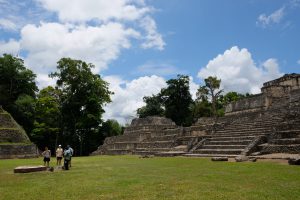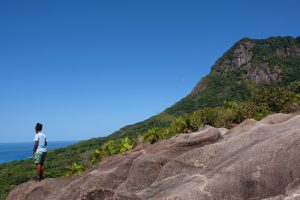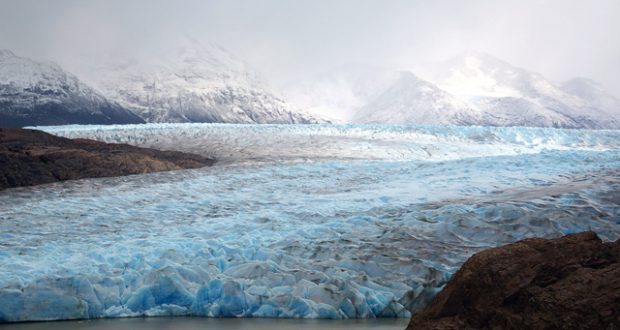
Screw your courage to the sticking place, pick up your ice axe and strap on some crampons: the western terminus of the ‘W’ trek in Chilean Patagonia is the vast, foreboding Grey Glacier
View online at nationalgeographic.com
In the shadow of the Grey Glacier my mettle is tested, and graded a big, fat, red ‘F’. From my seat on a tiny motorboat, weaving between the icebergs like a fly in a sculpture park, I consider the looming wall of ice ahead. The scale is terrifying. The glacier’s ramparts tower over 100ft high and span the six-mile breadth of the storm-hued Grey Lagoon.
At the centre, protruding from the ice like the gatehouse of a fortress, is the rocky ridge of Nunatak Island. From there, I’m due to spend the day exploring the surface of the glacier, a treacherous wilderness pitted with crevasses and prone to sudden blizzards. I’ve hiked for five days through the wilds of Torres del Paine National Park to get here, but nerve and sinew have fled in the face of this challenge and I want to follow them back to shore.
But when I finally catch Eduardo’s attention over the howl of the engine, he just waves at me from the prow of the boat, cups his hand to his ear and shrugs.
I look miserably back across the choppy lagoon towards the black-sand beach and cosy refugio hut of Bigfoot Adventure Patagonia, where Eduardo and his team of explorers-cum-guides camp out each summer season. I can just make out the bright kayaks on the shore and some dry suits flapping in the wind like shining seal pelts. There’s a wisp of chimney smoke rising above the tree line and for a blissful moment I think about wood burners and tin kettles of hot tea before the entire scene disappears behind a bobbing iceberg.
At Nunatak, we haul ourselves across rain-slicked rocks, scaling strategically placed ropes and ladders, bracing ourselves against biting blasts of wind and needling drizzle. Eduardo reveals himself to be an expert climber — and a stranger to reassurance.
“There are 22 types of crevasse,” he barks authoritatively as we crest the island and look out across an endless valley of ice cupped between mist-shrouded peaks, “and I don’t have time to explain them all. So just walk exactly where I do.” Inside the backpack I’d been given on shore I find a helmet, a metal ice pick, a pair of crampons, a chocolate bar and a harness.
“The harness is so I can — how you say it? — winch you out of a crevasse,” Eduardo explains. I feel the remaining colour drain from my face. “It’s never happened on all my tours, but it’s best to be prepared,” he says, tightening the straps around my hips.
Kitted up, we descend the final bluff, skirting small cairns of pebbles left by superstitious hikers. The rock face is chipped and scored as if it’s been attacked by the claws of a savage animal. The beast responsible is, of course, the glacier, now receding as a result of climate change, but which for aeons smothered the entire landscape and gouged the 1,600ft-deep trench that now holds the meltwaters of the lagoon.
At last we’re on the ice. “We’re the only life on this entire glacier,” Eduardo reminds me helpfully, as we crunch across virgin terrain. The soundscape strikes me as otherworldly: freak gusts of wind whistle a haunting reverie across the cragged surface and streams gurgle distantly below the ice. But I’m no longer unnerved by the glacier. Instead, I’m endlessly fascinated.
We pass under twisted, crystal seracs and peer into bottomless ravines where ice has been rendered deep blue by time and titanic forces. Erratic boulders caught up in the icy wave appear like lost punctuation marks on a blank page. And in the distance, shifting snow clouds reveal glimpses of far-off forests and peaks in a teasing burlesque. It’s desolate, bleak and utterly magical.
Shallow channels of sapphire snake through the frosty crust. I crouch to take a drink then stand to find myself completely alone. I look around. The wind howls. And then I notice a metal peg and a guy rope. My relief is indescribable. I discover Eduardo strapped into the wall of a trench, kicking steps into the ice. “I’m going down to check out this new cave. You coming?” he asks. The mouth of the cave is a gaping whorl of blue ice. My courage is making a comeback. “Count me in.”
HOW TO DO IT
The guided Ice Hike on the Grey Glacier is available between October and April from $104,500 CLP (£123) per person. Bigfoot Adventure Patagonia base camp can be accessed directly via ferry or the ‘W’ hiking route through Chile’s Torres del Paine National Park. chile.travel/en
Published in the South America guide, distributed with the October issue of National Geographic Traveller (UK)





